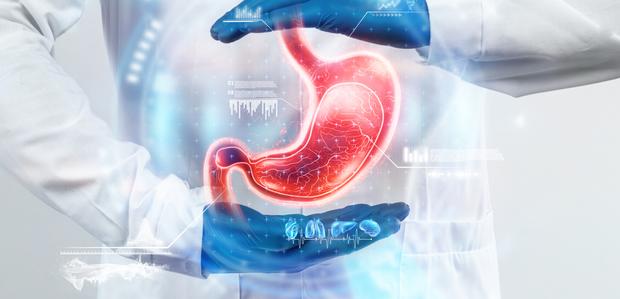The Top Choice for Surgical Gastroenterology: Gleneagles HealthCity Chennai

When it comes to finding the best surgical gastroenterology hospital in Chennai, look no further than Gleneagles HealthCity Chennai. With a commitment to excellence and a track record of delivering top-notch care, Gleneagles HealthCity Chennai stands out as the premier destination for those seeking specialized gastrointestinal treatments.
State-of-the-Art Facilities
At Gleneagles HealthCity Chennai, we understand the importance of advanced medical facilities in ensuring successful surgical procedures. Our hospital is equipped with state-of-the-art technology and cutting-edge equipment, providing our highly skilled medical professionals with the tools they need to deliver exceptional care.
Expert Gastroenterologists
Our team of expert gastroenterologists is renowned for their proficiency in diagnosing and treating a wide range of gastrointestinal conditions. With years of experience and a dedication to staying at the forefront of medical advancements, our specialists offer personalized treatment plans tailored to each patient's unique needs.
Comprehensive Services
Gleneagles HealthCity Chennai offers a comprehensive range of services in the field of surgical gastroenterology, including:
1. Minimally Invasive Procedures
Our hospital specializes in minimally invasive surgical techniques, ensuring shorter recovery times, reduced pain, and minimal scarring for our patients. We believe in providing the most effective treatments with the least disruption to your life.
2. Gastrointestinal Surgeries
From common procedures like appendectomies to complex surgeries such as liver resections, our surgical team is well-equipped to handle a wide spectrum of gastrointestinal surgeries. Rest assured that you are in capable hands at Gleneagles HealthCity Chennai.
3. Endoscopy Services
We offer state-of-the-art endoscopy services for precise diagnosis and treatment of gastrointestinal issues. Our advanced equipment and skilled specialists ensure accurate results and effective interventions.
Patient-Centric Approach
At Gleneagles HealthCity Chennai, we prioritize our patients' well-being above all else. Our patient-centric approach means that you will receive personalized care, clear communication, and the support you need throughout your journey to recovery.
Why Choose Gleneagles HealthCity Chennai?
- Proven Excellence: Our hospital has a track record of excellence in surgical gastroenterology, backed by numerous success stories and satisfied patients.
- Cutting-Edge Technology: We invest in the latest medical technology to ensure that our patients receive the best possible care.
- Experienced Team: Our team of experienced gastroenterologists and surgeons are leaders in their field.
- Compassionate Care: We understand the emotional and physical challenges that come with gastrointestinal issues, and we provide compassionate care to help you through it.
- Convenient Location: Located in the heart of Chennai, our hospital is easily accessible, making it convenient for patients and their families.
In conclusion, if you're in search of the best surgical gastroenterology hospital in Chennai, Gleneagles HealthCity Chennai should be your top choice. With our state-of-the-art facilities, expert medical professionals, and patient-centric approach, we are committed to providing you with the highest quality care. Don't compromise on your health – choose Gleneagles HealthCity Chennai for all your surgical gastroenterology needs. Contact us today to schedule a consultation and take the first step towards a healthier tomorrow.
Our Doctors
View all
Dr T S Bala Shanmugam
HOD and Senior Consultant
MBBS, MS, FMAS

Dr K Abhilash
Consultant
MBBS, MS, FMAS

Dr A C Vikram
Junior Consultant
MBBS, MS, MCh (Surgical Gastro)
- What is surgical gastroenterology, and when might I need it?
Surgical gastroenterology is a medical specialty that deals with surgical procedures related to the digestive system, including the stomach, intestines, liver, and pancreas. You might need surgical gastroenterology if you have conditions such as appendicitis, gallstones, colorectal diseases, or other gastrointestinal issues that require surgical intervention.
- Why should I choose Gleneagles HealthCity Chennai for surgical gastroenterology?
Gleneagles HealthCity Chennai is a leading healthcare provider known for its state-of-the-art facilities, experienced specialists, and a patient-centric approach. We offer advanced surgical gastroenterology services and prioritize your well-being throughout your treatment journey.
- What types of surgical procedures do you offer?
We offer a wide range of surgical procedures in the field of gastroenterology, including minimally invasive procedures, gastrointestinal surgeries, and endoscopy services. Our surgical team can address various digestive system issues, from simple to complex.
- What is minimally invasive surgery, and why is it beneficial?
Minimally invasive surgery, also known as laparoscopic surgery, involves making small incisions and using specialized tools and cameras to perform surgeries. It offers benefits such as shorter recovery times, reduced pain, and minimal scarring compared to traditional open surgeries.
- Do you offer financial assistance or insurance options?
We have various financial assistance programs and accept a wide range of insurance plans to help make healthcare accessible to as many people as possible. Our team can assist you in understanding your payment options.
FAQ
Why Choose Us
-
PATIENT EXPERIENCE
Your care and comfort are our top priorities. We ensure that the patients are well informed prior to every step we take for their benefit and that their queries are effectively answered.
-
LATEST TECHNOLOGIES
Your care and comfort are our top priorities. We ensure that the patients are well informed prior to every step we take for their benefit and that their queries are effectively answered.
-
PROVIDING QUALITY CARE
Your care and comfort are our top priorities. We ensure that the patients are well informed prior to every step we take for their benefit and that their queries are effectively answered.







